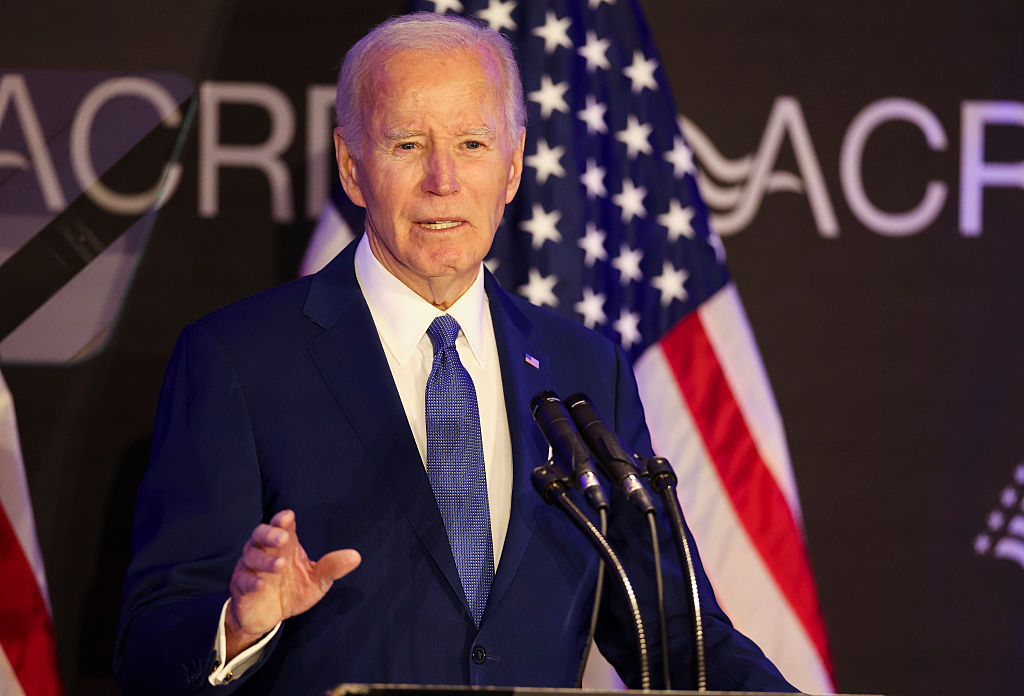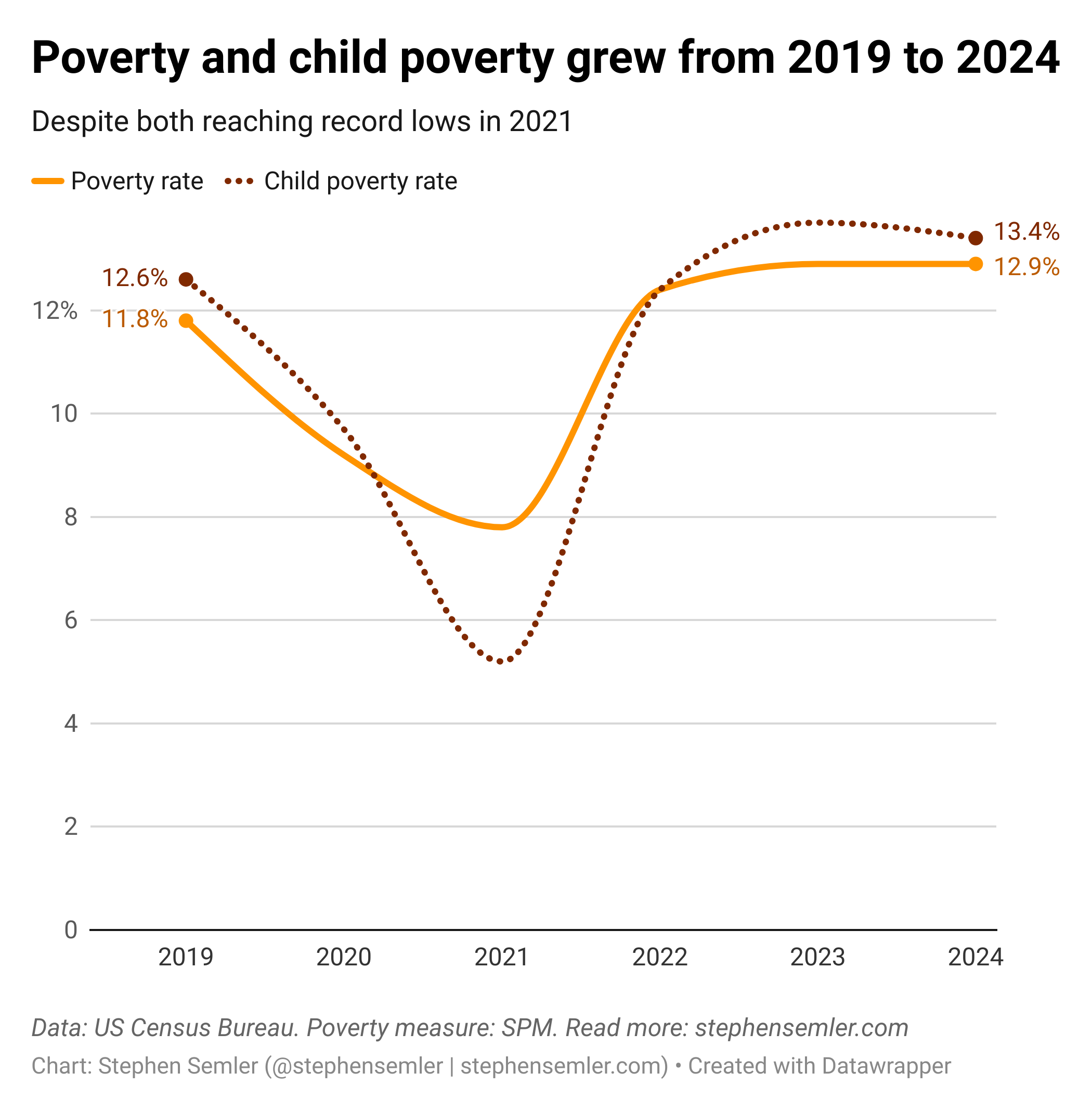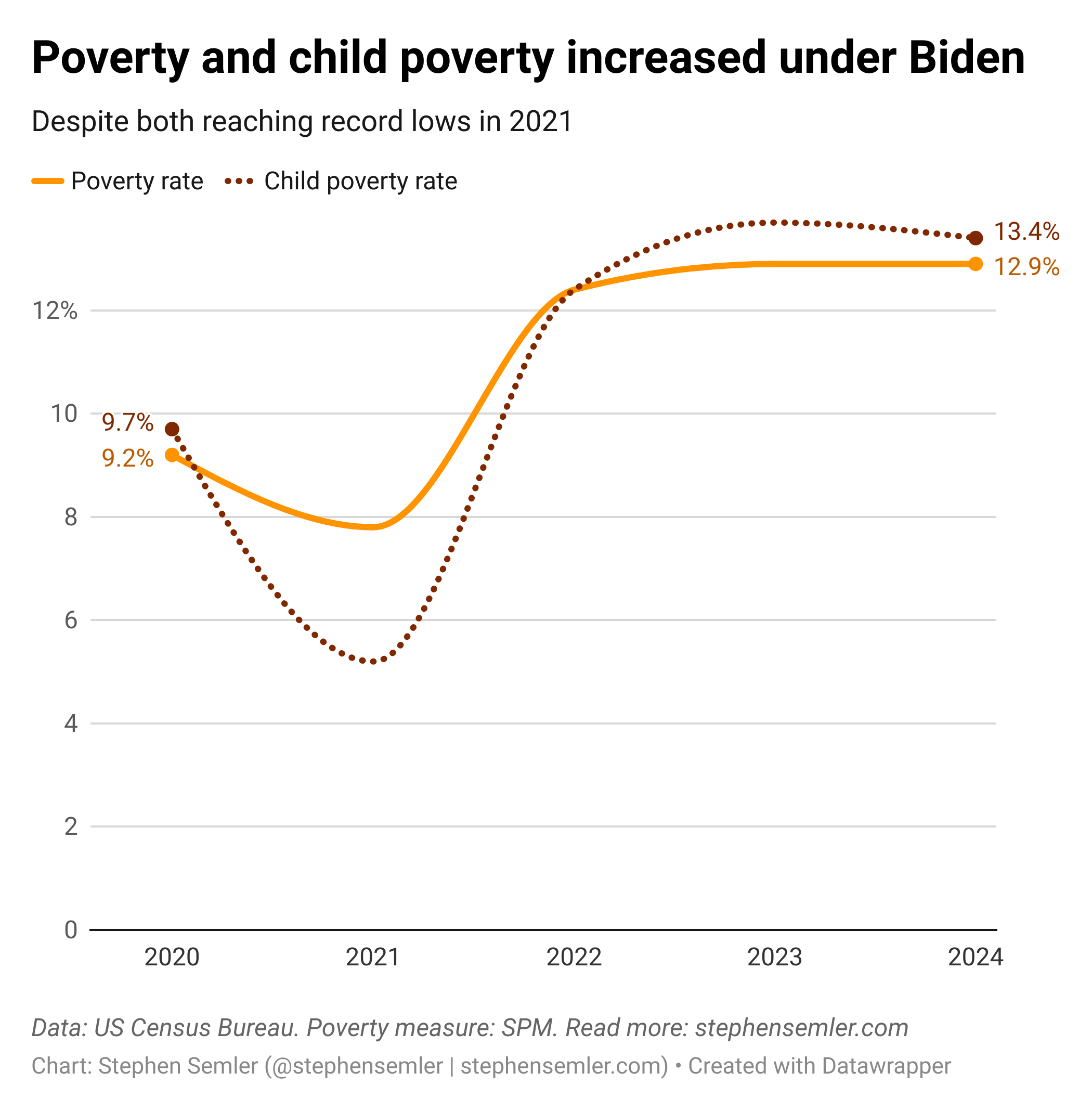It’s Official: Poverty Got Worse Under Joe Biden
A new Census Bureau report establishes that poverty increased over the course of the Biden administration. The data is yet another rebuke to the politicians and commentators who insisted economic conditions under Joe Biden were great.

As a matter of historical record, new Census Bureau data establishes that both poverty and child poverty increased under the Biden administration. (Eileen T. Meslar / Chicago Tribune / Tribune News Service via Getty Images)
The Census Bureau’s new annual report on poverty found that 44 million Americans lived in poverty last year, including 10 million children. As a percentage of the population, overall poverty stayed the same from 2023 to 2024 (12.9%), while child poverty fell slightly (from 13.7% to 13.4%).
As a matter of historical record, the new data establishes that both poverty and child poverty increased under the Biden administration (2021–24). By how much depends on what year you compare 2024’s levels with. The final year before Joe Biden took office was 2020, while 2019 reflects the pre-pandemic standard Biden promised to improve upon: “It is not enough to restore where we were prior to the pandemic. We need to build a stronger economy that does not leave anyone behind — we need to build back better,” the White House stated in early 2021.
If you choose 2019 as your point of comparison, the increase in poverty under Biden is bad. If you choose 2020, it’s catastrophic.
- Change, 2019–24:
- Poverty: 9.3% increase (+5.4 million people)
- Child poverty: 6.3% increase (+491,000 children)
- Change, 2020–24:
- Poverty: 40.2% increase (+13.7 million people)
- Child poverty: 38.1% increase (+2.5 million children)
I’ve included a chart for each data range below. Why the second one looks so much worse: There was a historic drop in poverty during the final year of Donald Trump’s first term. This was because in 2020, the US government spent money on public health and social welfare like it typically only does for wars: massive new investments enacted quickly, without the endless debates on how to pay for them (no US war since Vietnam has been paid for by a corresponding tax increase; they’ve all been funded through the deficit). This included $1.7 trillion through the CARES Act (enacted March 2020) and $868 billion through the Consolidated Appropriations Act (enacted December 2020).

Implications
The poverty data clarifies where we’re at politically and why economic insecurity more broadly could get even worse. The Democratic Party knows how to greatly reduce economic hardship but doesn’t appear interested in doing it again. Look at 2021 in the chart(s) above. Both poverty and child poverty hit record lows, thanks to Biden’s American Rescue Plan further expanding social welfare after the CARES Act and Consolidated Appropriations Act. The horrifying surge in poverty — and economic insecurity more broadly — afterward is attributable to pandemic aid programs expiring or being eliminated during a cost-of-living crisis. In 2024, Kamala Harris chose not to campaign on resurrecting a version of the pandemic welfare state, despite it having led to a historic reduction in economic hardship in 2021 and the cost of living having been voters’ top concern since 2022.
That approach gave us Donald Trump, whose own approach to worsening economic insecurity apparently involves slashing welfare further, deploying military personnel on US soil, and aggressively cracking down on free speech. The Trump administration’s militarized embodiment of cancel culture might be exactly what some people desire politically. But far more people — most people, it appears — simply want a brand of politics centered on reducing the shittiness of everyday life. Neither party is offering one.
I’d be remiss if I did not give a quick, tongue-in-cheek shout-out to the politicians and pundits who insisted economic conditions under Biden were great, dismissed widespread reports of economic misery by implying that people were too dense to understand their own financial situations, and enraged large swaths of the voting-eligible population with that politically toxic narrative. (Meanwhile, I was told I was helping Trump win by challenging that narrative — go figure.)